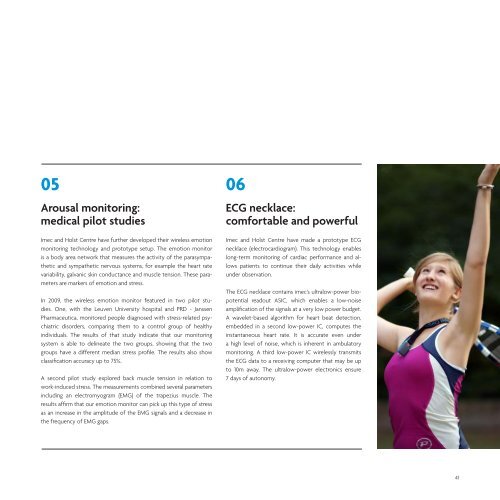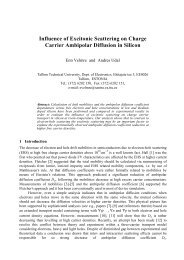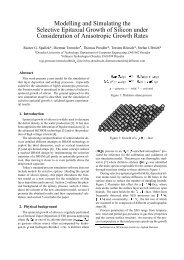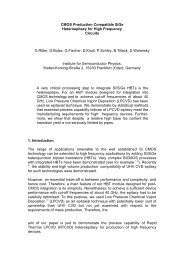Annual report 2009 - Imec
Annual report 2009 - Imec
Annual report 2009 - Imec
You also want an ePaper? Increase the reach of your titles
YUMPU automatically turns print PDFs into web optimized ePapers that Google loves.
05<br />
Arousal monitoring:<br />
medical pilot studies<br />
<strong>Imec</strong> and Holst Centre have further developed their wireless emotion<br />
monitoring technology and prototype setup. The emotion monitor<br />
is a body area network that measures the activity of the para sympathetic<br />
and sympathetic nervous systems, for example the heart rate<br />
varia bility, galvanic skin conductance and muscle tension. These parameters<br />
are markers of emotion and stress.<br />
In <strong>2009</strong>, the wireless emotion monitor featured in two pilot studies.<br />
One, with the Leuven University hospital and PRD - Janssen<br />
Pharma ceutica, monitored people diagnosed with stress-related psychia<br />
tric disorders, comparing them to a control group of healthy<br />
individuals. The results of that study indicate that our monitoring<br />
system is able to delineate the two groups, showing that the two<br />
groups have a different median stress profile. The results also show<br />
classification accuracy up to 75%.<br />
A second pilot study explored back muscle tension in relation to<br />
work-induced stress. The measurements combined several parameters<br />
including an electromyogram (EMG) of the trapezius muscle. The<br />
results affirm that our emotion monitor can pick up this type of stress<br />
as an increase in the amplitude of the EMG signals and a decrease in<br />
the frequency of EMG gaps.<br />
06<br />
ECG necklace:<br />
comfortable and powerful<br />
<strong>Imec</strong> and Holst Centre have made a prototype ECG<br />
necklace (electrocardiogram). This technology enables<br />
long-term monitoring of cardiac performance and allows<br />
patients to continue their daily activities while<br />
under observation.<br />
The ECG necklace contains imec’s ultralow-power bio-<br />
potential readout ASIC, which enables a low-noise<br />
amplification of the signals at a very low power budget.<br />
A wavelet-based algorithm for heart beat detection,<br />
embedded in a second low-power IC, computes the<br />
instantaneous heart rate. It is accurate even under<br />
a high level of noise, which is inherent in ambulatory<br />
monitoring. A third low-power IC wirelessly transmits<br />
the ECG data to a receiving computer that may be up<br />
to 10m away. The ultralow-power electronics ensure<br />
7 days of autonomy.<br />
41











